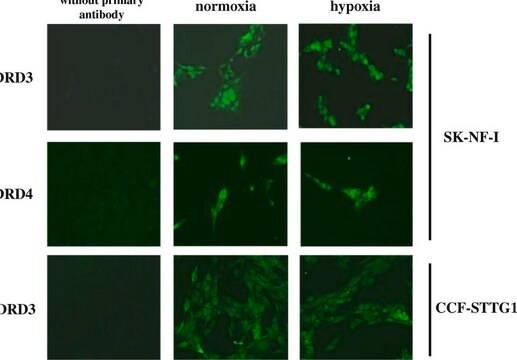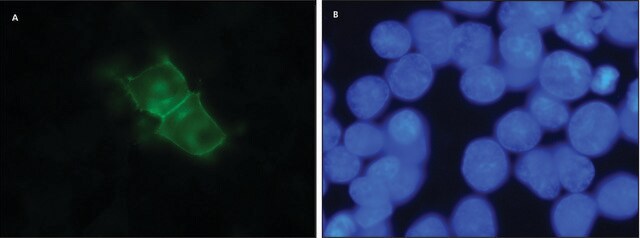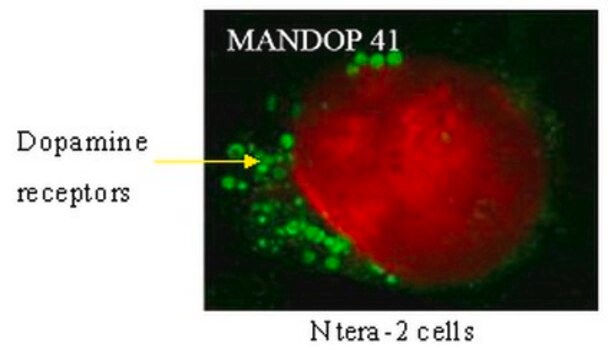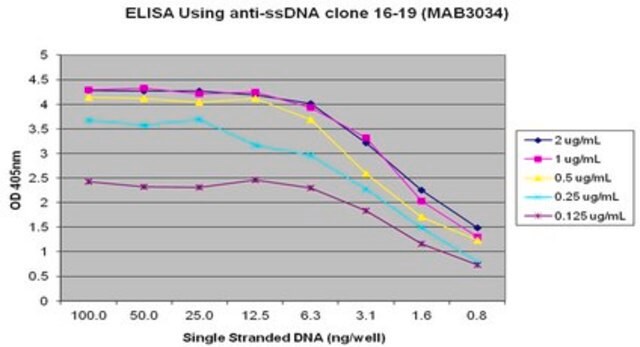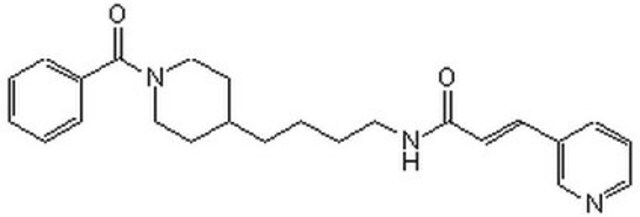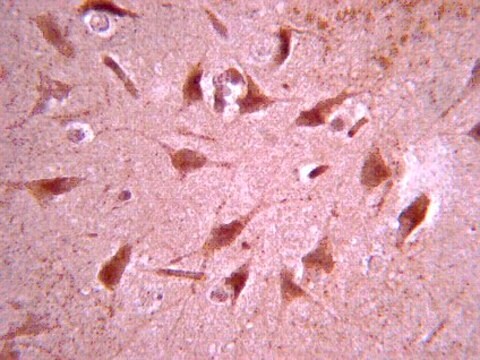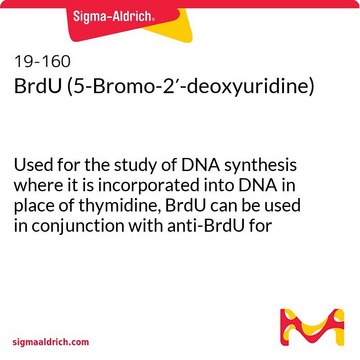AB1784P
Anti-Dopamine D1A Receptor Antibody, 4th Extracellular Domain
Chemicon®, from rabbit
About This Item
Produits recommandés
Source biologique
rabbit
Niveau de qualité
Forme d'anticorps
affinity purified immunoglobulin
Type de produit anticorps
primary antibodies
Clone
polyclonal
Produit purifié par
affinity chromatography
Espèces réactives
rat
Fabricant/nom de marque
Chemicon®
Technique(s)
ELISA: suitable
immunohistochemistry: suitable
western blot: suitable
Numéro d'accès NCBI
Numéro d'accès UniProt
Conditions d'expédition
dry ice
Modification post-traductionnelle de la cible
unmodified
Informations sur le gène
human ... DRD1(1812)
Spécificité
Immunogène
Application
Western blot: 1-10 μg/mL (Chemiluminescence technique). An antibody made to this peptide has been shown to detect 2 proteins of 50 and 75 kDa in solubilized hippocampal membranes. The 75 kDa band was not visible in striatum (Huang, 1992; O′Connel, 1995). Approximately 100-400 μg of protein/lane should be loaded to visualize the 75 kDa band (Huang, 1992; O′Connel, 1995) that is present in relatively small amounts.
ELISA: 0.5-1.0 μg/mL using 1 μg/mL of control peptide per well.
The immunogen peptide is available (Cat. No. AG266) for use in ELISA or antibody blocking studies. AG266 is not recommended for use as a western blot positive control.
Optimal working dilutions must be determined by end user.
Neuroscience
Neurotransmitters & Receptors
Forme physique
Stockage et stabilité
Remarque sur l'analyse
POSITIVE CONTROL: rat striatal membranes (western blot)
Autres remarques
Informations légales
Clause de non-responsabilité
Vous ne trouvez pas le bon produit ?
Essayez notre Outil de sélection de produits.
Code de la classe de stockage
10 - Combustible liquids
Classe de danger pour l'eau (WGK)
WGK 2
Point d'éclair (°F)
Not applicable
Point d'éclair (°C)
Not applicable
Certificats d'analyse (COA)
Recherchez un Certificats d'analyse (COA) en saisissant le numéro de lot du produit. Les numéros de lot figurent sur l'étiquette du produit après les mots "Lot" ou "Batch".
Déjà en possession de ce produit ?
Retrouvez la documentation relative aux produits que vous avez récemment achetés dans la Bibliothèque de documents.
Notre équipe de scientifiques dispose d'une expérience dans tous les secteurs de la recherche, notamment en sciences de la vie, science des matériaux, synthèse chimique, chromatographie, analyse et dans de nombreux autres domaines..
Contacter notre Service technique